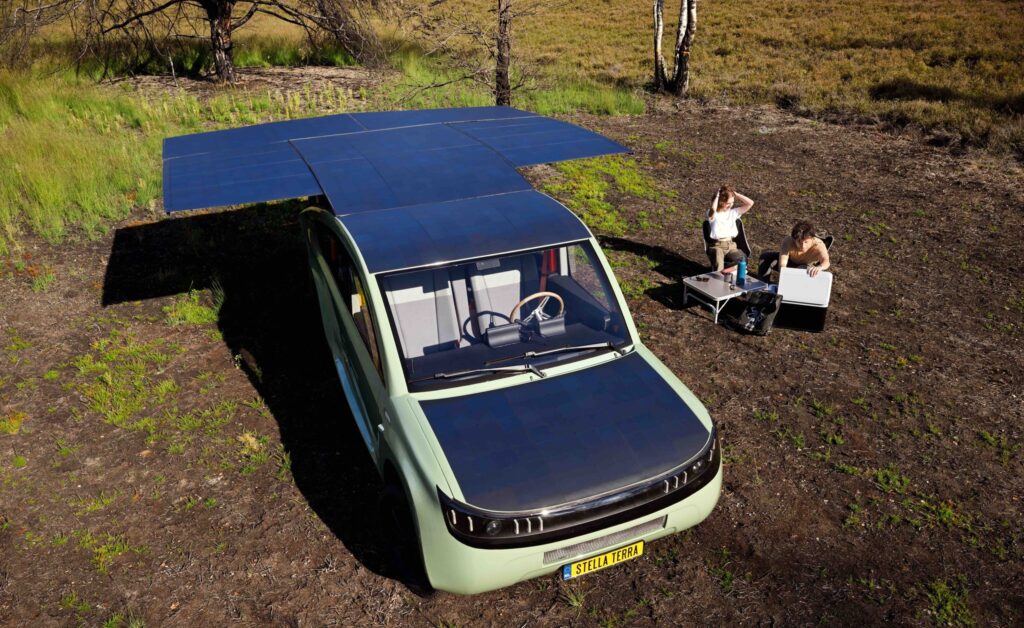NAIROBI, Kenya-Innovative minds from Eindhoven University of Technology (TUE) in the Netherlands have unveiled a groundbreaking concept: a solar-powered SUV named Stella Terra.
This piece of innovation managed to complete a 1,000 – kilometer journey test and sent shockwaves across electric vehicle enthusiasts around the world.
The design is meant to thrive in sunny regions and heighten the experience of off-grid adventures as it also doubles as a compact camper van.
This test showcased the EV’s advantages compared to traditional electric SUVs.
Solar Power on the Move
Stella Terra standout feature is its solar panels integrated into the sloping roof, which charge the electric battery even while driving.
This design eliminates the need for frequent charging stops and reduces reliance on large, heavy battery packs.
As a result, the vehicle weighs only 2,645 pounds (1,200 kilograms), approximately 25pc less than conventional electric SUVs.
Performance Across Morocco
Morocco has varied landscapes and stood out as the perfect location to put the machine to the test.
From the bustling streets of Tangier to the rugged Rif Mountains, through Fes and Midelt’s high mountain tracks, and down to the Sahara Desert’s sandy trails, the SUV faced a wide array of surfaces.
The results were impressive: Stella Terra can cover around 710 kilometers on paved roads and approximately 550 kilometers off-road, with slight variations depending on weather conditions.

Design and Efficiency
Minimizing weight and maximizing efficiency were key goals for the student team.
By using aerodynamic shapes and lightweight, robust composite materials, they achieved significant energy savings.
The car’s solar panels allow for a smaller battery, charging continuously during daylight hours, which further extends its range and utility.
Off-Grid Capabilities
Stella Terra is not just about driving; it’s designed for living.
When stationary, the rooftop solar array expands outward, increasing the charging surface area and creating an awning for shade.
The interior is also super comfortable and is fitted with seats that fully recline to form a comfortable bed, making it perfect for journeys far from reliable power grids.
Practical Repairs and Future Aspirations
During the Moroccan test drive, the steering system broke early in the trip.
However, the team managed to repair it on-site using locally sourced parts, demonstrating the vehicle’s practicality and resilience.
This adaptability is crucial for real-world applications, particularly in remote areas where professional repair services are scarce.
Inspiring the Automotive Industry
Thieme Bosman, TUE’s events manager, emphasized that Stella Terra aims to inspire not only consumers but also major automotive manufacturers like Ford and Chrysler.
The goal is to encourage faster innovation towards more sustainable vehicle designs.
While bringing such concept cars to mass production poses challenges, the TUE team is optimistic about the potential impact.
A Vision for Remote Connectivity
Stella Terra holds great promise for regions with underdeveloped infrastructure.
It can connect remote areas, assist in emergency aid, and facilitate deliveries where traditional electric vehicles fall short due to the lack of charging stations.
By harnessing solar power, it provides a sustainable solution for off-grid transportation needs.
Broader Impacts and Future Projects
This solar-powered SUV is part of a broader initiative by TUE’s automotive innovation lab, which has been pioneering solar-powered vehicles for over a decade.
Previous projects include the Zem, an electric vehicle with solar panels and carbon capture technology.
These innovations are typically “five to ten years ahead of the market,” according to Bosman, and highlight the lab’s commitment to leading the charge towards a more sustainable future.
The Path Forward
As the market now holds the key to widespread adoption, the success of Stella Terra could mark a significant shift in how we think about electric vehicles and renewable energy.
With continued support and investment, these groundbreaking concepts could soon become mainstream, paving the way for a greener, more connected world.



